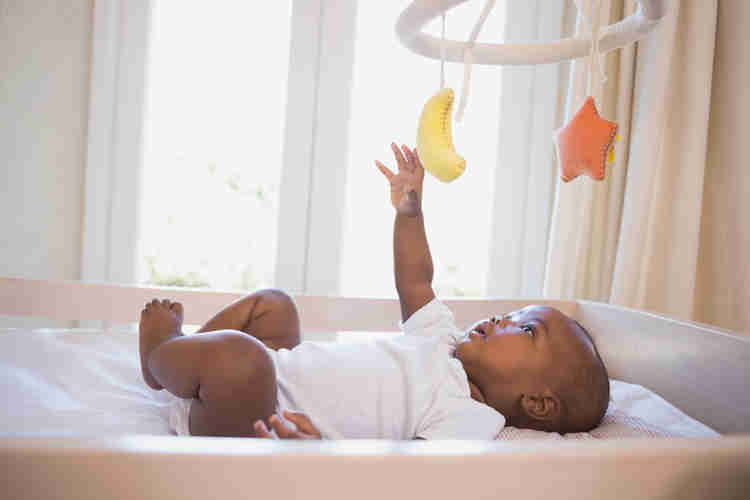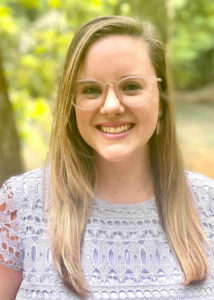
The decisions you make about the well-being of your child are just that – your decisions to make. I hope this gives you information that you can use to make informed decisions about creating a safe sleep environment for your baby. As always, you should ask your pediatrician for their recommendation on anything related to the health and safety of your child.
Most of you reading this are pregnant or new mamas! First, Congratulations – motherhood is such a beautiful adventure! If you are pregnant, you may fall under one of two categories: The Over Prepared or the It Will Be Fine. If you’re an Over Prepared, you are working to have every little thing you or your baby may need for the first 6 months to a year. You are working on themed décor for the nursery and researching cloth vs disposable diapers. If you’re an It Will Be Fine, you are focusing on keeping your mind and body calm, purchasing must-haves for the first month or two and researching labor breathing techniques and how to swaddle. However you are preparing for this life change, whether you are an Over Prepared, an It Will Be Fine, or maybe somewhere in between, ALL new and expecting parents must prepare by creating safe sleep environments for their babies. Below I will outline the Do’s and Don’ts for preparing and implementing a safe sleep environment for the first 6 months of your babies life. This will include what you should and should not do and products you do and do not need.
Where should my baby sleep?

Many families make the decision to bedshare (baby sleeps in the adult bed with one or more parents). If after doing your research you decide that is what is best for your family, I absolutely respect that decision. However, as a Certified Sleep Consultant, knowing all of the best ways to keep your baby safe, reduce risks of SIDS, and develop healthy sleep habits, I must warn you against bedsharing, especially within the first 6 months. The safest location for your baby to sleep is in a bassinet, bed-side sleeper, or crib in your bedroom for the first 4-6 months.
A Pack n’ Play may also be suitable – read all details of the product description to ensure how to use it for safe sleep.
Also note that the term “co-sleeping” is often used when talking about bedsharing but is also used when talking about bedside sleepers. Bedside sleepers, where babies have their own firm flat surface to sleep on with no risk of an adult rolling onto them is completely safe, whereas bedsharing has higher risks.
Since you may choose to invest in a bassinet or bedside sleeper for your baby for the first 4-6 months, you actually do not need to purchase a crib (or even set up an entire nursery at all!) before bringing your baby home. Often parents enjoy having a nursery mostly ready, including the tradition of building the crib. This is perfectly fine and I do recommend getting as much done before the baby comes since the first months after are going to be a lot busier and having things done may bring peace of mind. Keep in mind though, that for those having to make hard financial decisions about what you need first, a crib, mattress, or crib sheets are not needed until after 6 months. If you’d rather not buy a bassinet at all and just buy a crib, it is safe for your baby to sleep in the crib as long as it stays in your bedroom for the first 6 months.
If your baby falls asleep in their car seat or in a stroller, that’s totally fine. When you get home or to your destination, take them out and place them in their safe sleep environment. Do not leave you baby sleeping in the car seat once you’ve gotten back home. Do not have babies sleep in a Boppy or similar pillows designed for awake time. Babies can and should sometimes sleep on you during the first months for several reasons including to bond. Just ensure you do not fall asleep while holding your baby. For this reason, allow your baby to sleep on you during the day sometimes but not during nighttime sleep such as after middle of the night nursing.
How should my baby sleep?
Now, if you remember nothing else from this, remember ABC: ALONE, on their BACK, in a CRIB. We already discussed the crib situation. Alone means nothing else in the crib or bassinet. Do not put blankets, pillows, bumpers, stuffed animals, or even any sleep item that is advertised to improve babies sleep (like a special infant pillow). If you think there is a product you want to try, ask you pediatrician first and also research all the risks. There should just be the firm mattress designed for infant sleep, a waterproof mattress pad (optional), then a tight fitted sheet. When putting babies down- it’s ALWAYS on their back. This has been proven to be the safest. When your baby is old enough to roll over and they fall asleep on their tummy, that is okay. But still, you will put them down in their back. Tip: When putting down a sleeping baby, start by gently put down their bottom, next legs, then head. Keep your hand on their chest for a moment while they settle.
Creating a safe sleep environment is about more than just what is in the crib.
I hate to be the bearer of possible bad news here, but you know that adorable crib mobile you added to your registry and goes with the theme of your nursery so well? (I’m talking to you Miss Over Prepared!) Well, that mobile should not go over your crib while your baby is sleeping. It could fall and hurt your baby. Most mobiles actually have fine print that say it is not intended for use over a crib! This was a shocker for me as a new mom! This doesn’t mean you need to go delete this from your registry. You have two options. One, have it attached to something like this that can easily be removed every time baby is sleeping. You can have your baby play/admire it during awake time. My daughter loved when I would spin her mobile and sing, “Round and round the elephants go, when they’ll stop… nobody knows!” Option two: hang the mobile over your changing station. She can be distracted while you do the dirty work.

This same rule applies for wall décor, shelving, etc. Anything that could possibly fall off and land in the crib and on your baby should be avoided. If you do want some décor on the wall, you can leave a big enough space between the wall and the crib that if it fell, it wouldn’t fall into the crib. I’m sure there are also some methods of installing décor to guarantee it would never fall (that is not included in my expertise)! The only item that is safe to have in a crib or bassinet is a pacifier. Those are designed to be perfectly safe.
Oh there is one other thing that can go into those cribs and bassinets – A BABY!
Your baby should always wear clothing designed for sleep such as snug fitting pajamas or onesies, a swaddle cloth/velcro swaddle, or a sleep sack. You’ll likely start with onesies and a swaddle and graduate to PJs with a sleep sack as they get older. Your baby should never be wearing more than one layer more than you’re wearing. So if you’re sleeping naked with just a sheet on, don’t put your baby in warm pajamas and a swaddle – they’ll be too hot! The ideal room temperate is between 68 and 72 degrees Fahrenheit (or 20-22 degrees Celsius).
You’ll want to invest in a baby monitor to listen and watch baby when they are sleeping and you’re still awake. The whole sleep when they sleep thing is a myth. It will rarely happen during the day because you can’t eat when they eat, shower when they shower, do laundry when they do laundry so how are you supposed to sleep when they sleep all the time? So get a video/audio monitor to listen in. One thing I wish someone had warned me about: in their first weeks and even months, babies make the weirdest noises while sleeping. It will freak you out. Unless it sounds like they’re choking, they are probably fine. With that said, of course check on them and talk to your pediatrician about any health related concerns.
What other items should you consider for developing a great sleeper? You’ll want a white noise machine, and possibly black out shades. Skip the night lights!
If you’re an expecting parent or your baby is under 2 months old, I recommend checking out our Nights & Naps Newborn Sleep Guide.
If your baby is over 2 months old and you’re ready to start making plans to drastically improve sleep for your family in the coming weeks, learn more about our All Inclusive Sleep Consulting Program!
This was a lot of information, if you have any other questions about safe sleep, please email us at info@nightsandnaps.com or find us on Instagram or facebook!
>> Written by Shannon Buhera, Certified Pediatric Sleep Consultant through The Center for Pediatric Sleep Management
>> Learn more about my individualized Sleep Consulting Services

I use links to Amazon Affiliate products throughout the post. I will not go into detail explaining each product but If you want more information, you can click the link to see an image even if you do not want to buy from Amazon. If you do buy from Amazon after clicking these links, I will receive a small commission.
References
Most of this information I learned from my certification course through the Center for Pediatric Sleep Management.
“How to Keep Your Sleeping Baby Safe: AAP Policy Explained.”HealthyChildren.Org, Website. Accessed 6 July 2020.“Myths and Facts About SIDS and Safe Infant Sleep.” Safe to Sleep, Website. Accessed 5 July 2020.
